
Target Diving on the Waterfront & Excavations on
EPII & the Brick Wreck
14 -18 July 2008
By Team 3: Eric Swanson, Jenn Scharler, and Scott Sorset
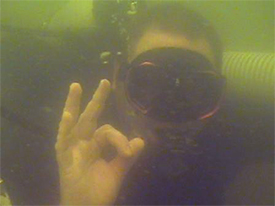
Jake working on EPII.
Monday marked the beginning of week seven of our field school. Everyone from the greenest to the most experienced is starting to show more confidence in everything that they are doing. Our team, number 3, continued working on another new unit in the northern part of the Emanuel Point II site. We were able to complete a second level within our grid which is carefully labeled and placed at 101N 485E.
On Tuesday we had a group of our student divers that were sent on a waterfront survey mission. This mission was to review promising targets that had previously been identified by our magnetometer, which detects underwater magnetic anomalies. In this case, our equipment provided the location of two large iron cylindrical objects, each about 5 feet wide and 21 feet long, that were found in 25 feet of water. It is possible that these objects are boilers from a ship sometime in the late 19th or early 20th century. Many more hours of research and recording will be needed before we are able to come to any solid conclusions.
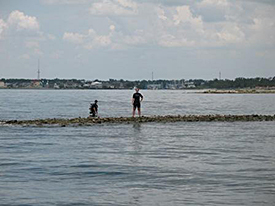
Kendra and Chris on large rock pile.
Wednesday a group of students were chosen to explore the waterfront as a part of Kendra Kennedy’s thesis topic. The students chosen to accompany her and Christine Mavrick during this research were Eric Swanson, Jake Shidner, Hans Schmid III, and Brian Durnan. Hans and Brian were the first team to enter the water, and they circle-searched on a target identified by our side-scan sonar. Unfortunately due to dive time and air consumptions rates, the two were not able to find the source of the anomaly. During the second dive of the day, Jake and Eric descended in 13 feet of water to investigate another target identified by the side-scan sonar. The team circle-searched in two meter increments and eventually came upon pipeline that was sticking out of the sediment. Along the pipe, a large hole was found to the Southeast where much marine life had taken shelter, but very little else was discovered as far as cultural material. The team surfaced and then proceeded to the next target location.
The third target location was a magnetometer recorded anomaly in a relatively shallow location in the bay. A large rock pile was discovered in shallow water, which allowed the area to be investigated with snorkel gear. Many machine parts were mapped into the GPS for future reference. The fourth target location, also a magnetometer anomaly, was close to the rock pile that was investigated in dive 3. Eric and Jake proceeded to circle-search in 2 meter intervals and reached a maximum diameter of 22 meters, at which point the hour dive restriction prevented them from proceeding. No diagnostic material was found.
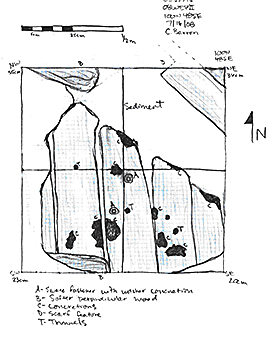
Scale drawing of one of the north unit. By Chris Barron. (Large View)
Although Thursday began in a somewhat uncertain fashion, it ended up being a day that yielded excellent results for research on the Emanuel Point II shipwreck. The day started for the north unit team on dive one (Chris Barron and Jake Shidner) excavating a new unit that had been opened the previous day and that was showing excellent signs of planking that flanked the port side of the earlier discovered keelson and skirt timbers. By the time the next team (Team 3: Eric, Scott, & Jenn) dove on the unit, most of the measurements were approaching the end of level 2 (20-40 cmbs). Team 3 began dredging the unit until it reached an average of 42 cmbs. When the team reached the end of the level, Eric took advantage of the good visibility and drew as much as he could, as Scott retrieved the video camera and filmed the unit in its entirety.
The second dive for the team was located at 7 meters and directly to the east of the main baseline. The location for this unit was chosen in attempt to discover the ship’s mast-step. The team began the first level (0-20 cmbs) by dredging and removing ballast stones from the top of the unit. Scott was in charge of recording measurements and ballast sizes and locations, Jenn held the dredge head, and Eric took measurements and hand fanned the sediment along with the rest of the team and Dr. John Bratten. The end of the day brought a great sense of accomplishment as we were able to close a unit and begin investigation of the keelson.
Friday proved to be another excellent day. Dean and Irina took a group of students, including Team 3ís Scott Sorset, out to the Brick Wreck. To Deanís excitement, dredging on the Brick Wreck commenced for the first time during the course of the í08 field school and significant progress was made. Back on EPII, we welcomed three visitors to the barge. Dr. Harris, who is the man responsible for building the wonderful model of EPI, and his two sons, joined us for an afternoon of diving on EPII. Our visitors were given a tour of the site and were provided with a chance to assist in the excavating effort. Friday was a half-day, and each team was assigned one dive a piece. Team 3 continued dredge work on our new unit. Eric and Jenn continued dredging the unit and removing ballasts in hopes that they soon find the mast-step.
Images of timbers, ballast, oyster shells, and sediment in units on EPII.
All in all, we had a week of incredible weather and productivity. In the next weeks of field school we are hoping to explore more anomalies on the waterfront and continue excavating the Brick Wreck and EPII.
Please feel free to contact us if you have any questions or concerns at: mua@keimaps.com.
Return to Project Journal home page.
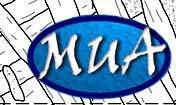
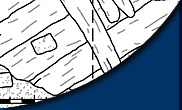
 .
.